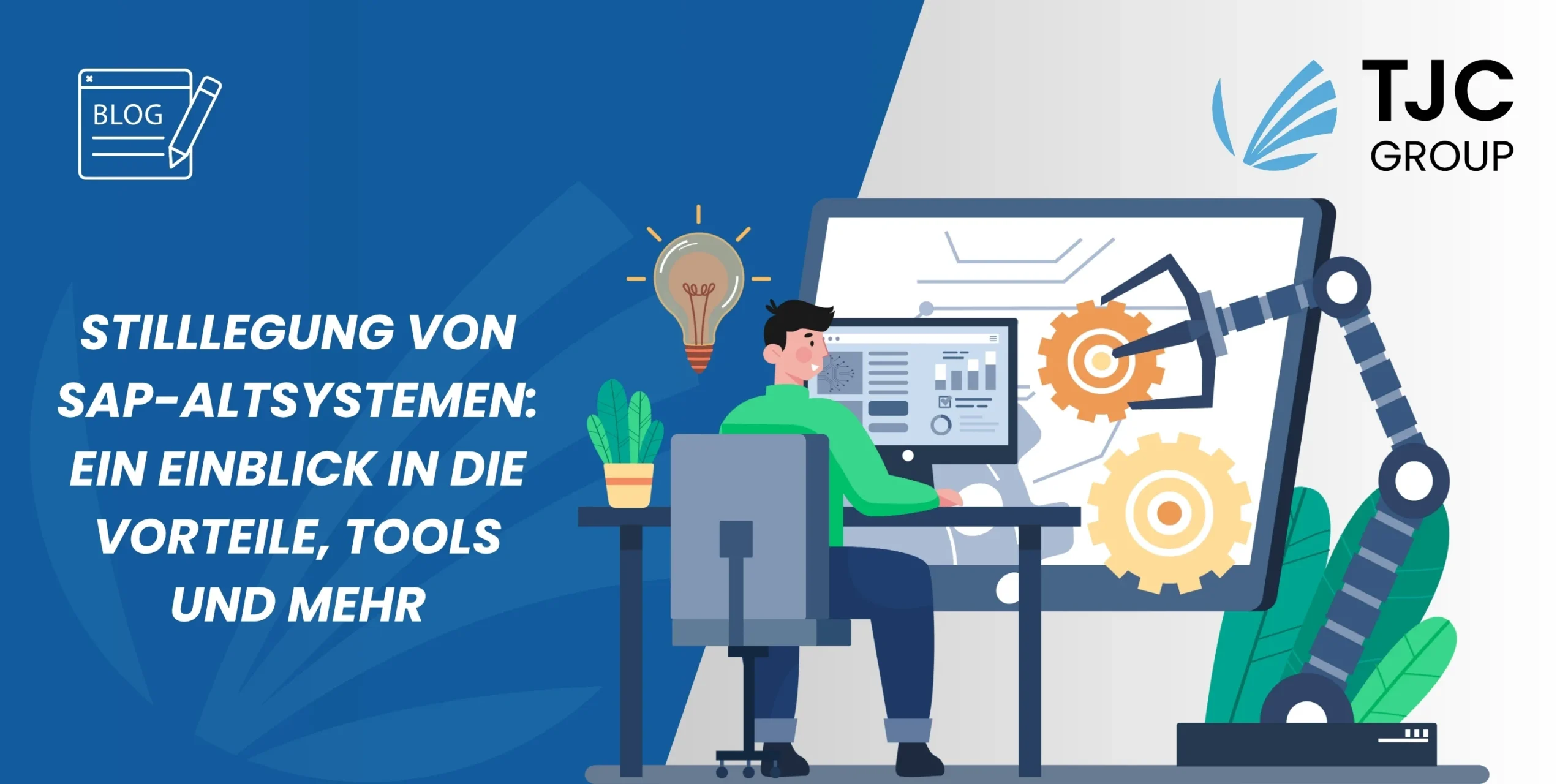
In den letzten Jahrzehnten haben Unternehmen mehr denn je Zugang zu riesigen Datenmengen erhalten. Diese Daten bilden die Grundlage für wichtige Geschäftsentscheidungen. Um jedoch sicherzustellen, dass die Mitarbeiter eines Unternehmens über genaue Informationen für die Entscheidungsfindung verfügen, ist es unerlässlich, diese großen Datenmengen zu verwalten und in geeignete Datenverwaltungslösungen zu investieren. Hier erhalten Sie einen detaillierten Einblick, warum Datenmanagement für eine nachhaltige Zukunft und effektive Geschäftsabläufe wichtig ist.
Inhaltsübersicht
Ein Überblick über die Datenverwaltung
Einfach ausgedrückt ist Datenmanagement der Prozess des Sammelns, Organisierens, Sicherns und Speicherns der Daten eines Unternehmens, die später analysiert und für wichtige Geschäftsentscheidungen verwendet werden. Angesichts der Geschwindigkeit, mit der Unternehmen Daten erstellen und verbrauchen, ist ein ganzheitlicher Ansatz für die Verwaltung dieser Daten das Gebot der Stunde.
Daten sind für den Betrieb eines Unternehmens von zentraler Bedeutung. Es ist jedoch wichtig, diese Daten sinnvoll zu nutzen und gleichzeitig die durch die verschiedenen Technologien und Systeme geschaffenen Trends zu erkennen. Daten stehen immer im Mittelpunkt eines jeden Unternehmens, doch wenn sie auf sich allein gestellt sind, werden sie unbrauchbar. Unternehmen benötigen Strategien, Governance- und Datenverwaltungslösungen, die sowohl effektiv als auch nachhaltig sind, um alle Arten von Daten für den operativen Einsatz in Lieferketten, Mitarbeiternetzwerken, Partner- und Kundenökosystemen und vielem mehr zu nutzen.
Heutzutage gibt es viele Datenverwaltungslösungen für Unternehmen, die dazu beitragen, dass stets zuverlässige und aktuelle Daten zur Entscheidungsfindung verwendet werden. Die Softwarelösungen helfen bei der Aufbereitung von Daten und Katalogen und ermöglichen es den Benutzern, Informationen schnell zu finden, zu suchen und zu verwalten.
Die Bedeutung der Datenverwaltung in Unternehmen
Nach Berichten von Statista betrug die Menge der weltweit erzeugten, erfassten, kopierten und verbrauchten Daten im Jahr 2020 etwa 64,2 Zettabyte. Es wird geschätzt, dass das weltweite Datenaufkommen in den nächsten Jahren bis 2025 um mehr als 180 Zettabyte wachsen wird. Die logischste Erklärung für den plötzlichen Anstieg des Datenvolumens soll die COVID-19-Pandemie sein, denn alles wurde von zu Hause aus betrieben – Studenten, die online Unterricht nehmen, Büroangestellte, die von zu Hause aus arbeiten oder die Unterhaltungsmöglichkeiten zu Hause immer häufiger nutzen. Ebenso wie das wachsende Datenvolumen wird auch die Speicherkapazität bis 2025 mit einer durchschnittlichen jährlichen Wachstumsrate von 19,2 % zunehmen. Die Erhöhung der Speicherkapazität erfordert jedoch ein strategisches Management, das die Verwaltung des Datenvolumens zu einer Priorität macht.

Komponenten der Datenvolumenverwaltung
Datenverwaltungssysteme sind auf Plattformen aufgebaut, die eine Reihe von Komponenten und Prozessen umfassen, die zusammenarbeiten, um die Wertschöpfung aus Ihren Daten zu ermöglichen. Dabei kann es sich um Data Warehouses, Datenbankverwaltungssysteme, Datenanalyse, Integrationstools und mehr handeln.
Datenbank-Management-Systeme (DBMS)
Ein Datenbankmanagementsystem (DBMS) ist ein Softwaresystem, das für die strukturierte Verwaltung und Organisation von Daten entwickelt wurde. Mit einem DBMS können Benutzer eine Datenbank erstellen und ändern und gleichzeitig die Sicherheit und die Zugriffskontrolle für diese Datenbank verwalten. Es gibt verschiedene Arten von Datenbankmanagementsystemen; die gängigsten sind jedoch –
- Relationale Datenbankverwaltungssysteme (RDBMS)
- Objektorientierte Datenbankverwaltungssysteme (OODBMS)
- In-Memory-Datenbanken
- Säulenförmige Datenbanken
- NoSQL
- Grafik DB
Beachten Sie, dass diese Arten von DBMS verschiedenen Zwecken dienen und auf der Grundlage von Faktoren wie der Art der Daten, den Anforderungen an die Skalierbarkeit, den Leistungsanforderungen und dem spezifischen Anwendungsfall der Anwendung ausgewählt werden.
Data Warehouses und Data Lakes
Data Warehouses: Es handelt sich um ein zentrales Repository für die gesammelten Daten aus verschiedenen Quellen zu Berichts- und Analysezwecken.
Datensee: Der Begriff “See” mag für Sie unpassend klingen, aber tatsächlich handelt es sich bei Data Lakes um einen riesigen Pool von Daten, die in ihrem rohen oder natürlichen Format gespeichert sind. Typischerweise werden Data Lakes in Big Data gespeichert, die strukturierte, unstrukturierte und halbstrukturierte Daten umfassen.
Zu beachtende Datenverwaltungstechniken
Die Datenverwaltung spielt in der Datenumgebung eines Unternehmens zahlreiche Rollen und macht wichtige Funktionen einfacher und weniger zeitaufwändig. Datenverwaltungstechniken umfassen ein breites Spektrum an Praktiken und Methoden, die darauf abzielen, Daten während ihres gesamten Lebenszyklus effizient und sicher zu verwalten. Einige gängige Datenverwaltungstechniken sind –
Stammdatenverwaltung (MDM)
Unter Stammdatenmanagement oder MDM versteht man den Prozess der Erstellung einer einzigen vertrauenswürdigen Stammreferenz für alle wichtigen Geschäftsdaten wie Produktdaten, Kundendaten, Anlagendaten, Finanzdaten und viele mehr. Mit Hilfe der Stammdatenverwaltung können Unternehmen sicherstellen, dass nicht mehrere und inkonsistente Versionen von Daten in Prozessen, Abläufen, Analysen und Berichten verwendet werden.
Datenverwaltung
Data Governance ist eine wichtige Datenverwaltungstechnik. Sie ist eine Sammlung von Regeln und Verantwortlichkeiten, die die Verfügbarkeit, Qualität, Konformität und Sicherheit von Daten im gesamten Unternehmen gewährleisten. Sie legt die Infrastruktur fest und benennt die Personen oder Positionen innerhalb des Unternehmens, die sowohl die Befugnis als auch die Verantwortung für den Umgang mit bestimmten Arten von Daten und deren Schutz haben. Data Governance ist also ein wichtiger Bestandteil der Compliance, bei der die Systeme für die Mechanismen der Speicherung und Sicherheit sorgen. Es stellt sicher, dass die Daten korrekt sind und angemessen geschützt werden, bevor sie in das System eingegeben werden, wenn sie verwendet werden, und auch wenn sie aus dem System abgerufen werden.
Datensicherheit
Angesichts von Hackern, Viren, Cyberangriffen und Datenschutzverletzungen ist die Datensicherheit zu einem großen Anliegen für Unternehmen geworden. Datensicherheit für die Datenverwaltung ist ein Teil der Data Governance. Die Governance sorgt dafür, dass die Systeme zum Schutz der Daten korrekt eingerichtet und verwaltet werden. Darüber hinaus wird sichergestellt, dass es Verfahren zum Schutz von Daten gibt, die sich außerhalb des Systems und der Datenbank befinden.
Integration von Daten
Mit der Datenintegration können Daten bei Bedarf aufgenommen, übertragen, kombiniert und bereitgestellt werden. Sie findet innerhalb des Unternehmens und darüber hinaus statt – über Partner, Datenquellen von Drittanbietern, Anwendungsfälle usw. – so dass die Anforderungen an die Datennutzung aller Anwendungen und Geschäftsprozesse erfüllt werden. Zu den Datenintegrationstechniken gehören u.a. Massen-/Batch-Datenbewegung, Erfassung von Änderungsdaten, Extrahieren, Transformieren, Laden (ETL), Datenvirtualisierung, Datenreplikation und Datenorchestrierung, um nur einige zu nennen.
Dies sind nur einige Beispiele für Datenverwaltungstechniken, und Organisationen können eine Kombination dieser Techniken anwenden, die auf ihre spezifischen Datenverwaltungsbedürfnisse und -ziele zugeschnitten ist.
Wie kann die TJC Group Unternehmen bei der SAP-Datenverwaltung helfen?
Eine unserer Schlüssellösungen, die Datenarchivierung, ist eine wichtige Möglichkeit zur Verwaltung und Kontrolle von Daten, die zur Verbesserung der Geschäftseffizienz beiträgt.
Datenarchivierung
Die Datenarchivierung ist ein strategischer Ansatz zur Bewältigung des Datenwachstums, zur Optimierung der Systemleistung und zur Gewährleistung einer effizienten Nutzung von Datenbankressourcen in SAP-Umgebungen. Sie hilft Unternehmen, ein Gleichgewicht zwischen der Aufbewahrung wichtiger historischer Daten und der Aufrechterhaltung einer schlanken und leistungsstarken IT-Infrastruktur zu finden. Sie werden in ein Langzeitspeichersystem verschoben und können bei Bedarf wieder in das Hauptsystem integriert werden. In der SAP-Welt ist das Archive Development Kit (ADK)* die Technologie, die für die Datenarchivierung zusammen mit der Archivverwaltung (Transaktion SARA) verwendet wird.
Außerdem ist die Datenarchivierung ein sicherer Prozess, der die langfristige Aufbewahrung und Speicherung von Daten ermöglicht. Sie bietet sichere Speicherorte für geschäftskritische Informationen, die im Bedarfsfall verwendet werden sollen. Sobald die Daten im Verwaltungssystem archiviert sind, bleiben die Informationen zugänglich und ihre Integrität ist geschützt.

Die Bedeutung der Datenarchivierung
Verbesserte Systemleistung
Das Entfernen historischer oder nicht so häufig genutzter Daten aus der Live-Datenbank optimiert die gesamte Systemleistung. Dies kann zu schnelleren Antwortzeiten bei Transaktionen, Berichten und Abfragen führen und gleichzeitig die Produktivität und Zufriedenheit der Benutzer erhöhen.
Geringere Datenbankgröße und Speicherkosten
Die Archivierung inaktiver Daten hilft, Speicherplatz in der Live-Datenbank freizugeben, wodurch die Datenbankgröße und die damit verbundenen Speicherkosten reduziert werden. In der Tat führt dies zu allgemeinen Kosteneinsparungen für Unternehmen, insbesondere für solche, die in Umgebungen mit teuren Speicherlösungen arbeiten.
Einhaltung der Richtlinien zur Datenaufbewahrung
Die SAP-Datenarchivierung ermöglicht es Unternehmen, Richtlinien zur Datenaufbewahrung effektiv umzusetzen und durchzusetzen. Durch die Festlegung von Aufbewahrungsfristen und Archivierungskriterien können Unternehmen sicherstellen, dass die gesetzlichen, behördlichen und geschäftlichen Anforderungen an die Datenaufbewahrung und -vernichtung eingehalten werden.
Vereinfachte Datenverwaltung
Die Archivierung trägt auch zur Rationalisierung der Datenverwaltungsprozesse bei, indem sie die Live-Datenbank entrümpelt und es den Administratoren erleichtert, die DB zu pflegen und zu verwalten. Außerdem hilft sie bei der Durchführung von Backups und routinemäßigen Wartungsaufgaben.
Verbesserte Notfallwiederherstellung und Geschäftskontinuität
Durch die Verringerung der Datenbankgröße und die Optimierung der Leistung trägt die SAP-Datenarchivierung zu einer nahtlosen Disaster Recovery und verbesserten Business Continuity-Funktionen bei. Unternehmen können Daten sichern und wiederherstellen und Ausfallzeiten und Datenverluste bei Systemausfällen effektiver minimieren.
Vorteile der Datenarchivierung
- Reduzieren Sie die gesamten Speicherkosten und die Gesamtbetriebskosten von SAP-Systemen
- Sicherstellen, dass das Produktionssystem weniger Ressourcen verbraucht
- Steigern Sie die Leistung des SAP-Systems
- Leichtere und kürzere Backup-Zeiten
- Kürzere Migrationszeiten, z.B. bei der Umstellung auf Cloud-Speicher oder bei der Migration auf die Version SAP S/4HANA.
- Förderung der Nachhaltigkeit durch Verringerung des Datenspeicherbedarfs Verbesserte Erfüllung von Compliance-Anforderungen
Das letzte Wort
Als eines der führenden Unternehmen für SAP-Datenmanagement bietet die TJC Group Lösungen an, die –
- Verbessert die Effizienz von Geschäftsprozessen durch die Automatisierung von manuellen Datenarchivierungsaufgaben.
- Reduzieren Sie den Zeit- und Arbeitsaufwand in einem HANA-Migrationsprojekt erheblich
- Automatisieren, optimieren und verbessern Sie die Zuverlässigkeit der Datenarchivierung
- Reduzieren Sie das Volumen und das Wachstum Ihrer Daten
- Sie können auch Daten löschen, wenn Sie einen Schritt weiter gehen.
Lesen Sie die Fallstudie von Dunelm, einer etablierten britischen Einzelhandelsmarke, die die Vorteile der Datenarchivierung aus erster Hand erfahren hat. https://www.tjc-group.com/resource/dunelm-sap-data-archiving-case-study/
Die TJC Group bietet eine eigene Software, die Archiving Sessions Cockpit (ASC) für die Datenarchivierung an. Mit ASC kann Ihr Unternehmen regelmäßig eine automatisierte Archivierung durchführen und manuelle Fehler beseitigen, ohne die Geschäftsprozesse der Kunden zu beeinträchtigen. Dank der Automatisierung reduziert die ASC die Größe der Datenbank erheblich. Die SAP-Datenarchivierung mit der ASC der TJC Group erreicht eine durchschnittliche Archivierungsquote von mindestens 95%. Kontaktieren Sie uns für weitere Informationen und bleiben Sie auf dem Laufenden für unsere kommenden Blogs.










